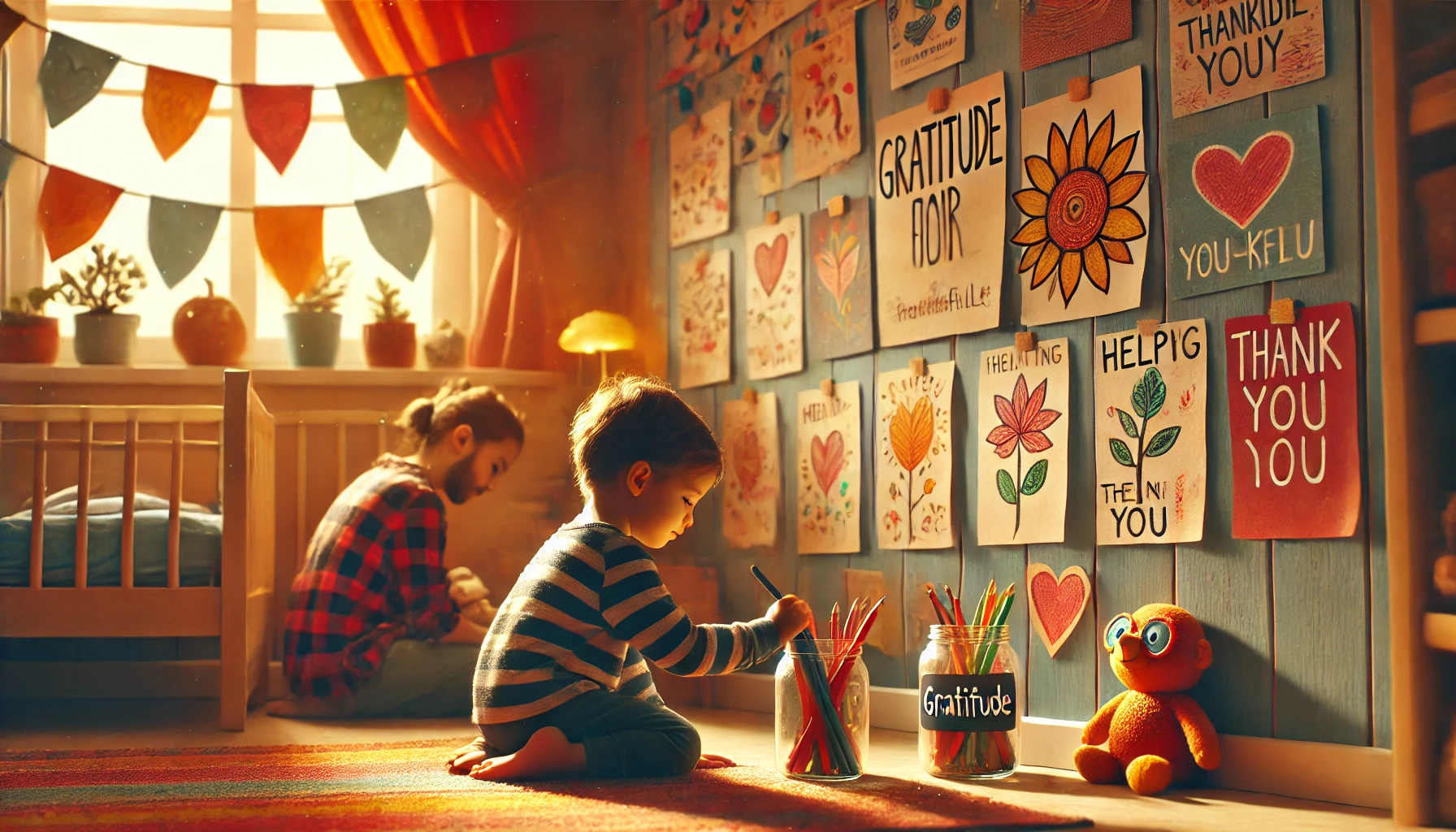Gratitude is a powerful emotion that helps children feel happier, build stronger relationships, and develop a positive outlook on life. Teaching young children to recognize and appreciate the good things in their lives lays the foundation for emotional well-being, empathy, and generosity. While they may not understand the word “gratitude” right away, they can absolutely learn how to feel and express thankfulness in meaningful ways.
Why Gratitude Matters in Early Childhood
- Fosters empathy and kindness
- Improves emotional regulation and happiness
- Strengthens family bonds and friendships
- Promotes mindfulness and contentment
- Helps children focus on what they have rather than what they lack
1. Explain Gratitude in Simple Language
Start with basic definitions and everyday examples.
Activity Idea:
- Say: “Gratitude means being thankful for the people, things, and moments that make us happy.”
- Use examples like family, toys, hugs, meals, or fun experiences.
- Ask: “What made you smile today?”
What Kids Learn:
- That gratitude is about noticing and appreciating the good.
- How to name things they’re thankful for.
- That happiness comes from awareness, not just having more.
2. Make Gratitude Part of Your Daily Routine
Repetition helps gratitude become a habit.
Activity Idea:
- During dinner or bedtime, ask: “What’s one thing you’re thankful for today?”
- Keep a “Gratitude Jar” where your child adds a note or drawing each day.
- Use a daily gratitude calendar with stickers or pictures.
What Kids Learn:
- That every day has something to be thankful for.
- How to reflect on their experiences.
- How habits create positive thinking.
3. Model Gratitude in Your Own Life
Children imitate what they see.
Activity Idea:
- Say thank you often, even for small things: “Thanks for helping me clean up!”
- Express appreciation out loud: “I’m so thankful for this sunny day.”
- Send thank-you notes with your child, even if they just draw the picture.
What Kids Learn:
- That gratitude is part of normal communication.
- How to notice and express appreciation.
- That saying thank you matters.
4. Read Books That Inspire Gratitude
Stories help children understand feelings through characters.
Activity Idea:
- Read books like Thankful by Eileen Spinelli or Bear Says Thanks by Karma Wilson.
- After reading, ask: “What was the character thankful for?”
- Let your child illustrate their own gratitude story.
What Kids Learn:
- That everyone has reasons to be thankful.
- How to find gratitude in different situations.
- That stories reflect their own feelings.
5. Encourage Thankful Actions, Not Just Words
Help your child show appreciation through helpfulness and kindness.
Activity Idea:
- Suggest kind actions: drawing a thank-you picture for a friend or helping a sibling clean up.
- After an outing or gift, guide your child to say thank you with words or a hug.
- Praise thoughtful gestures: “That was kind of you to say thank you.”
What Kids Learn:
- That gratitude can be shown, not just spoken.
- How their actions affect others.
- That giving thanks feels good.
6. Practice Mindful Moments
Gratitude and mindfulness go hand-in-hand.
Activity Idea:
- Go on a “gratitude walk” and point out things you enjoy: trees, flowers, birds, sunshine.
- Encourage quiet time to think or draw about happy memories.
- At bedtime, reflect: “What made you feel cozy or happy today?”
What Kids Learn:
- How to slow down and notice the moment.
- The emotional connection between gratitude and calmness.
- How to tune into their environment and experiences.
7. Discuss Challenges with Gratitude
Help children find positives even in tough moments.
Activity Idea:
- After a difficult day, say: “What’s one good thing that still happened?”
- Talk about how people help each other during hard times.
- Help your child write or draw about something that made them feel better.
What Kids Learn:
- That gratitude isn’t only for perfect days.
- How to build resilience through reflection.
- That finding small positives helps big feelings.
8. Celebrate Grateful Thinking
Reinforce your child’s efforts to be thankful.
Activity Idea:
- Create a “Gratitude Star” system or wall where your child adds a star for each kind or thankful moment.
- Say: “I noticed you thanked Grandma without being reminded—that was thoughtful.”
- Reflect together: “How do you feel when someone thanks you?”
What Kids Learn:
- That gratitude is noticed and valued.
- How appreciation connects people.
- That kindness creates joy.
Final Thoughts
Teaching young children about gratitude isn’t about forcing them to be polite—it’s about helping them recognize the beauty and blessings in their everyday lives. With daily habits, meaningful conversations, and loving guidance, children can grow into thankful, mindful, and compassionate individuals.
